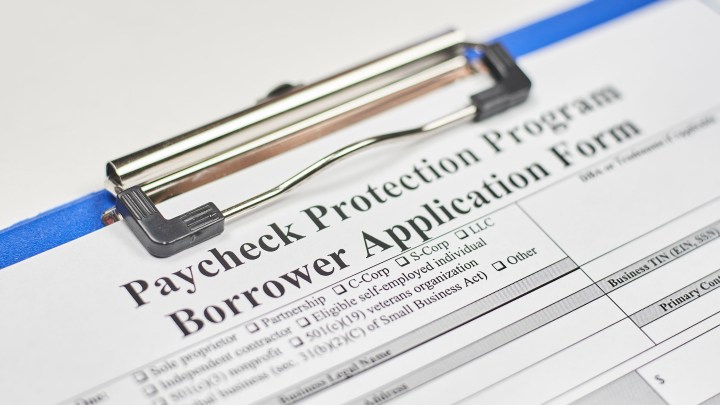
Which businesses got PPP loans? Probably those that needed them the least, researchers say.
Which businesses got PPP loans? Probably those that needed them the least, researchers say.

Who got loans under the Paycheck Protection Program?
This is money — grants if the paperwork is done right — to keep businesses afloat and employees on payrolls until the effects of the pandemic ease. Under pressure from Congress, federal officials have agreed to eventually release that information. But there’s new research from Lawrence Schmidt at the MIT Sloan School of Management and Dimitris Papanikolaou of the Northwestern Kellogg School of Management that suggests those who got the most aid, may have needed it the least.
Marketplace’s Nova Safo has more on that. The following is an edited transcript of his conversation with “Marketplace Morning Report” host David Brancaccio.
Nova Safo: The researchers looked at a number of different data sets that are already available, and what he extrapolated is that those most affected by job losses right now — lower-income workers — got the least amount of money from the Paycheck Protection Program, because loan amounts were based on how much firms paid their employees. Here’s what Schmidt had to say:
“And so what this ends up meaning is that if you’re a firm that pays higher salaries, you’re going to be eligible for more aid. But this has the perhaps unintended consequence of sending more aid to the types of firms where perhaps people are least exposed to the pandemic.”
For example, Schmidt found the biggest loans went to the professional and technical services sector — lots of remote workers, fewer jobs lost.
David Brancaccio: Congress is now considering what another pandemic aid package might look like. In light of his findings, what does Schmidt suggest?
Safo: Well, what he’s saying is that the initial rounds of aid were pretty uniform, and that made sense because Congress needed to act quickly. But now Schmidt suggests a different approach:
“When some people are really being hit hard and others are going to be more or less OK, able to keep their jobs, it might be a little more advantageous to put into place a more targeted approach. Because then you could send larger checks or send checks for longer periods of time to these types of sectors that are severely disrupted.
One example he gave here is child care: Lower-income employees and women are more likely to not be able to work if they don’t have child care for kids stuck at home because schools are closed. So that’s one way he says Congress can target aid in the next round.
There’s a lot happening in the world. Through it all, Marketplace is here for you.
You rely on Marketplace to break down the world’s events and tell you how it affects you in a fact-based, approachable way. We rely on your financial support to keep making that possible.
Your donation today powers the independent journalism that you rely on. For just $5/month, you can help sustain Marketplace so we can keep reporting on the things that matter to you.


















